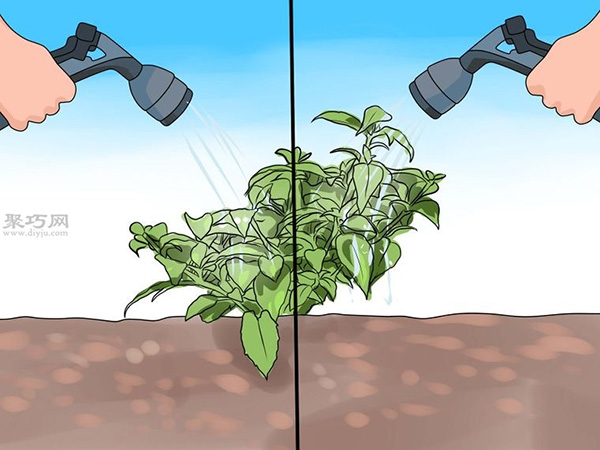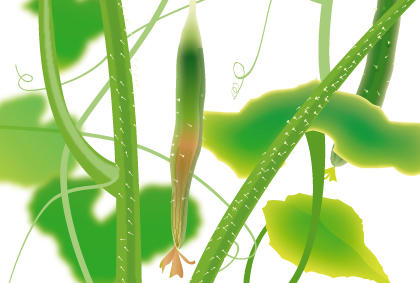How to take care of lavender to see the planting of lavender tutorial
Lavender has beautiful flowers and wonderful fragrance, easy to grow and tastes both elegant and popular, and is very popular in all kinds of gardens. Here are some ways to grow and maintain lavender yourself.
How to protect lavender is part of a series of tutorials on planting lavender. The tutorials also include preparation, planting and maintenance. If you want to know how to maintain lavender, follow Juqiao to see the planting of lavender tutorials.
How to maintain lavender
Fertilizing the soil with lavender is a plant that doesn't need to be protected. It only needs to be fertilized once a year. Use extra-root topdressing in early spring to apply a small amount of compost and bone meal mixture. You can also use a liquid fish emulsifier or seaweed extract to fertilize once or twice in the summer.
Water less, as mentioned earlier, moisture is the natural enemy of lavender, and if the roots of the plant become too wet, it will kill the plant faster than drought or cooling. In fact, overwatering newly planted lavender in early spring is the main reason for planting failure.
Watering should be moderate to ensure that the soil is completely dry before each watering, but the plant itself cannot be short of water.
If you plant lavender in a container, make sure the container has good drainage to prevent moisture from accumulating at the bottom.
To get rid of weeds, you can cover the soil around the roots of lavender with a thin mulch. Use light-colored coverings, such as coarse sand, gravel, or oyster shells. Plastic film also helps to protect plants from frost in winter.
Prune lavender prune your plants once a year, preferably before the start of a new growing season in spring. You should trim off 1/3 of the whole plant and use a pruning or fence trimmer to create a neat and perfect shape.
Pruning lavender will stimulate it to grow new growth points and prevent it from growing in disorder.
Be sure not to overprune the plant, which may completely curb new growth.
The best time to harvest flowers is when the flowers at the bottom of each stem are about to bloom. At this time, lavender is the most dynamic and fragrant. Cut the flowers from the bottom of the stem near the leaves.
Dry lavender. Tie about a hundred flowers together, tie them with a rubber band and hang them upside down in a warm, dark, dry room for about 10 to 14 days.
If you want to decorate the house with lavender, put the flowers in a vase, but don't soak the roots in water, this will only rot the stems and make the flowers wither faster.
DIY Tips
The color of the leaves generally ranges from grayish green to silver gray, and a few varieties have bright yellowish green leaves. Not all varieties are readily available, but they can be ordered through the website or the seed bank.
Lavender is in full bloom in summer, from lavender-toned gray to vibrant blue-purple. Some varieties are white, pink and yellowish green when they are in full bloom. The flower itself is small and sometimes bud-like, but it blooms densely and is covered with separate stems.
A perennial lavender can grow to 0.3 to 0.9 meters, depending on the variety. You need at least six hours of light a day, and the more the better. Lavender grows in cold-tolerant areas and is planted at intervals of about 0.4 meters.
Some varieties of lavender can be planted from seeds (especially the "Munster" variety), or you can buy plants from the culture pot in the spring. The most popular varieties are Grosso, Provence, Royal Violet, Cinderella and Sidcott.
The old stems of lavender are woody, and plants are not as easy to transplant as other perennials. If a transplant is necessary, move it out after the new growth point begins to grow in the spring and replant it immediately. It can also be cultivated by pressing method.
Matters needing attention
Lavender is prone to root rot. To avoid this, never overwater lavender plants and keep winter watering to a minimum.
Time: 2019-05-08 Click:
- Prev

How to take care of the inverted Golden Bell to see the course of planting the inverted Golden Bell
How to care for the inverted Golden Bell is part of a series of tutorials on planting the inverted Golden Bell. The tutorial also includes starting planting, transplanting the inverted Golden Bell into the garden, and daily care. Want to know how to care for the inverted Golden Bell. Follow the Juqiao Network to see the planting inverted Golden Bell tutorial.
- Next

Measures to prevent Cucumber Diseases and insect pests from five Common Diseases in planting Cucumber
For cucumber growers who want to grow cucumbers on the balcony, here are the key points to protect cucumbers from diseases
Related
- Fuxing push coffee new agricultural production and marketing class: lack of small-scale processing plants
- Jujube rice field leisure farm deep ploughing Yilan for five years to create a space for organic food and play
- Nongyu Farm-A trial of organic papaya for brave women with advanced technology
- Four points for attention in the prevention and control of diseases and insect pests of edible fungi
- How to add nutrient solution to Edible Fungi
- Is there any good way to control edible fungus mites?
- Open Inoculation Technology of Edible Fungi
- Is there any clever way to use fertilizer for edible fungus in winter?
- What agents are used to kill the pathogens of edible fungi in the mushroom shed?
- Rapid drying of Edible Fungi

